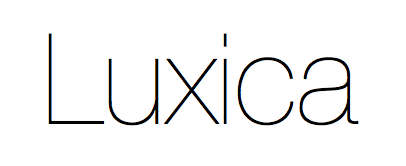As a tech professional with both business and technical abilities, I get approached somewhat frequently by curious people about how they can go about making their tech ideas a reality. Whether they are good ideas or not, one thing that all the people have in common is that they don’t know how to make it all happen. How do you take your app idea and make it a reality? If you’re serious about your idea, it would behove you to sink some time and energy in to getting the ball rolling on your own.
By starting with you first, not only will you actually get your idea off the ground, but you will also save yourself a significant amount of capital by having most of the answers already, rather than paying expensive professionals to help you figure them out. Of course there will come a point where you will need to get professionals involved, but the point is that if you can do most of the initial legwork, you’ll be in a very good position to execute in an effective fashion. Here are a few quick tips to help you get on your way.
Start With Your Minimum Viable Product
In many cases, app ideas start out with a grandiose vision, like “People should be able to use my app to order emergency evacuation helicopters within 15 minutes, wherever they are, at any time of day, in case their hot date went wonky.”
That’s great! Your vision could help a lot of people get out of awkward situations! But I can tell you right now that the complexity involved in making that possible is too much to tackle all at once. You need to start smaller. A lot smaller. Check out the image below to see what I mean:

Be Able To Answer Every Imaginable Question About The App (The Fewer Unknowns, the Better)
Of course, designers and coders will always come at you with questions you could never have foreseen, but for the most part, you should be able to answer any possible question about your idea. Not only that, but you should have it documented in a format that is searchable and sensical! Too much back and forth communication is a killer for time and cost effectiveness when it comes to having tech built. This probably seems like a lot of work, but if you’re not willing to at least give this a shot, sorry… You won’t make it!
Determine Business Rules For Every Case
For coders and designers, many aspects of the building process revolves around determining conditions for which to do things. Much like the way computers work at their core with ones and zeroes flying all over the place, you want to reduce all complexity in your app to a binary decision. Of course you can have more complex binary decisions built on simpler ones, but just understand that this is how the builders need to work. For example, if you have a simple button in your app, you should be able to identify the following:
- Who gets to see the button?
- What does the button say?
- Under what conditions should the button be displayed or not displayed?
- When should the button be disabled, if necessary?
- Does the button behave the same all of the time? In what cases would it behave differently?
Create Designs for EVERYTHING (And Please Start With Mobile FIRST!)
You don’t need to be a master drawer or designer to do this. Basic sketches will do. Here are some things to consider:
- What components are on each page?
- What is the flow of interaction?
- What does each screen look like on mobile? Tablet? Desktop?
There are many free and paid apps out there that can help you easily build mockups for websites, apps, and even business processes, so I would encourage you to use those if possible.
In conclusion, you want to get to a point where you have enough documentation and imagery or media so that you could hand off the project to a coder, or designer and they could start building without too much back and forth trying to figure out what the hell you really want / need. I hope that this article helps save you some time and capital, or helps you realize that maybe you don’t really want to follow through with your idea (because you have too many hot dates, of course!).
Cheers,
Marcel

